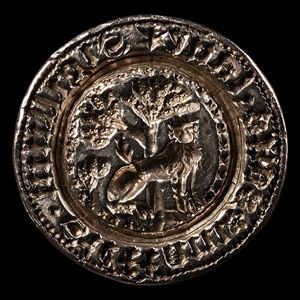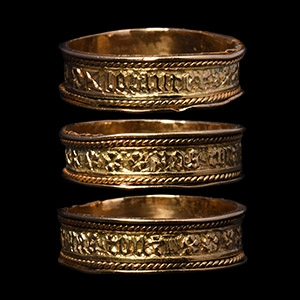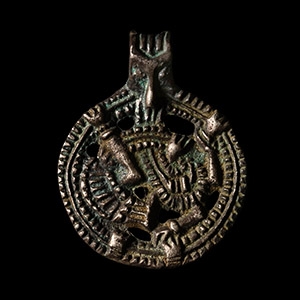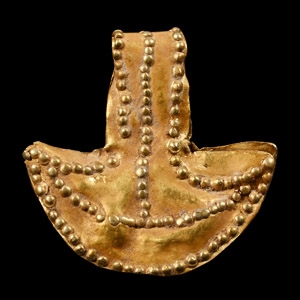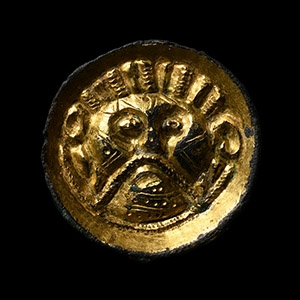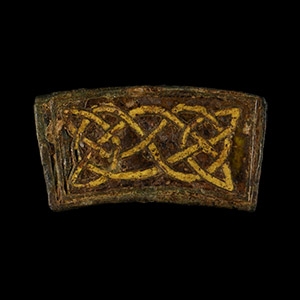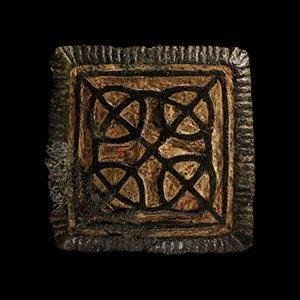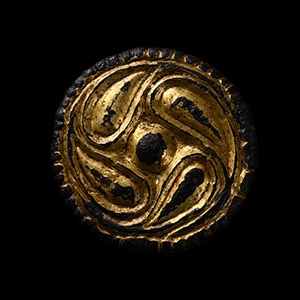Home > Auctions > 21 - 25 February 2023
Ancient Art, Antiquities, Natural History & Coins
Auction Highlights:
Private collection formed in Europe in the 1980s.
Westminster collection, central London, UK.
Cf. Korshyn, V.E., Yazicheskiye Priveski Drevniye Rusi X-XIV Vekov, Moscow, 2013, items K.2.01-03.
Riddarholmen type pendants were also widespread in the historical Rus region centred on Kiev.
Acquired 1980-2015.
Ex Abelita family collection.
The techniques used to manufacture this pendant (working sheet gold and granulation) had been in the repertoire of the Scandinavian goldsmith since the Iron Age and formed part of the manufacturing process for bracteate pendants and other jewellery items (Reynolds Brown, K. et al., From Attila to Charlemagne. Arts of the Early Medieval Period in the Metropolitan Museum of Art, New York, 2000, p.15-16, 310-1).
Acquired 1971-1972.
From the collection of the vendor's father.
Property of a London, UK, collector.
This lot has been checked against the Interpol Database of stolen works of art and is accompanied by search certificate no.11648-198857.
Cf. Arbman, H., Birka I: Die Gräber, Uppsala, 1940, plate 58, for tortoise-brooch types.
Acquired 1971-1972.
From the collection of the vendor's father.
Property of a London, UK, collector.
Cf. Arbman, H., Birka I: Die Gräber, Uppsala, 1940, pl.39, 86, 88-91.
Found UK.
Acquired in the 1990s.
From a North Yorkshire private collection, UK.
Cf. Avent, R. and Evison, V., Anglo-Saxon Button Brooches, in Archaeologia Or Miscellaneous Tracts Relating To Antiquity, London Society of Antiquaries, Volume CVII, London, 1982, pl.XV-XVI, for types.
The brooch does not fall neatly into Avent & Evison's typology, being somewhat larger than the standard forms of button brooch and with an unusually detailed face. Broadly, it resembles Class J with alternating plain and textured vertical strands in the hair but does not have the horizontal band across the brow nor the stylised beard associated with the type. The eccentric placement of the eyes suggests that the image may be the face of the god Woden (Odin) who famously sacrificed one eye in exchange for wisdom.
Found UK.
Acquired in the 1990s.
From a North Yorkshire private collection, UK.
Cf. Youngs, S. (ed.), The Work of Angels. Masterpieces of Celtic Metalwork, 6th-9th centuries AD, London, 1989, item 112, 131, 132, for type.
It is likely that this is a mount from a house-shrine or similar piece of ecclesiastical equipment with studs to the underside and a hole at each end to accept a rivet.
Found UK.
Acquired in the 1990s.
From a North Yorkshire private collection, UK.
Cf. similar detailed interlace quadrants in Hammond, B., British Artefacts vol.2 - Middle Saxon & Viking, Witham, 2010, p.91.
The item was originally conceived as an appliqué with central cell probably containing a cabochon garnet or meerschaum disc. At some point later a bar was added across the reverse with the ends of the rivets interrupting the surface design.
Found whilst searching with a metal detector in Pershore, Worcestershire, West Midlands, UK.
Accompanied by a copy of the British Museum's Portable Antiquities Scheme Report no.WAW-BC2657.
Cf. MacGregor, A. & Bolick, E., A Summary Catalogue of the Anglo-Saxon Collections (Non-Ferrous Metals), Oxford, 1993, item 47.19, for type.
Found UK.
Acquired in the 1990s.
From a North Yorkshire private collection, UK.
Cf. Pollington, S., Kerr, L. & Hammond, B., Wayland's Work: Anglo-Saxon Art, Myth & Material Culture from the 4th to 7th century, Ely, 2010, pl.17.
Found UK.
Acquired in the 1990s.
From a North Yorkshire private collection, UK.
Cf. Hammond, B., British Artefacts vol.2 - Middle Saxon & Viking, Witham, 2010, item 1.6-w, for similar design.
The pierced attachment lug is typical of plates attached to horse-harness and similar leather items.
Found UK.
Acquired in the 1990s.
From a North Yorkshire private collection, UK.
Found UK.
Acquired in the 1990s.
From a North Yorkshire private collection, UK.
Cf. Youngs, S. (ed.), The Work of Angels. Masterpieces of Celtic Metalwork, 6th-9th centuries AD, London, 1989, items 131, 132.
The shape of the piece indicates that it is a quadrant from a divided circular pattern, similar to the kinds of enamelled inset and applied panels which appear on Irish house-shrines.
145 - 156 of 2116 LOTS


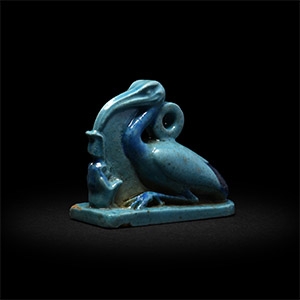



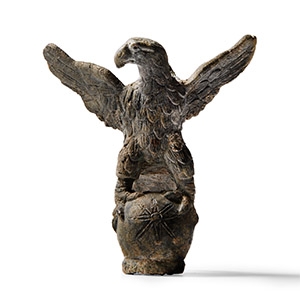
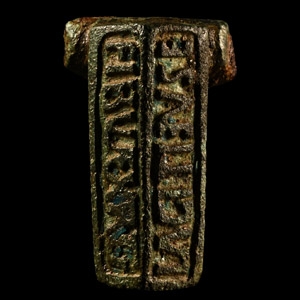

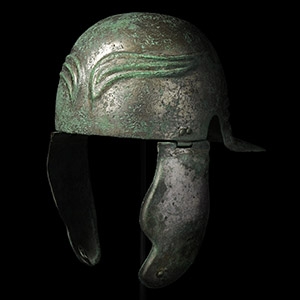
.jpg)
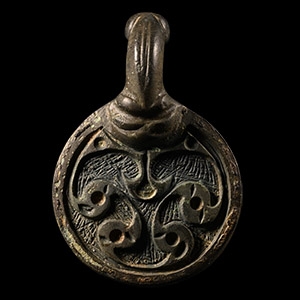
.jpg)
